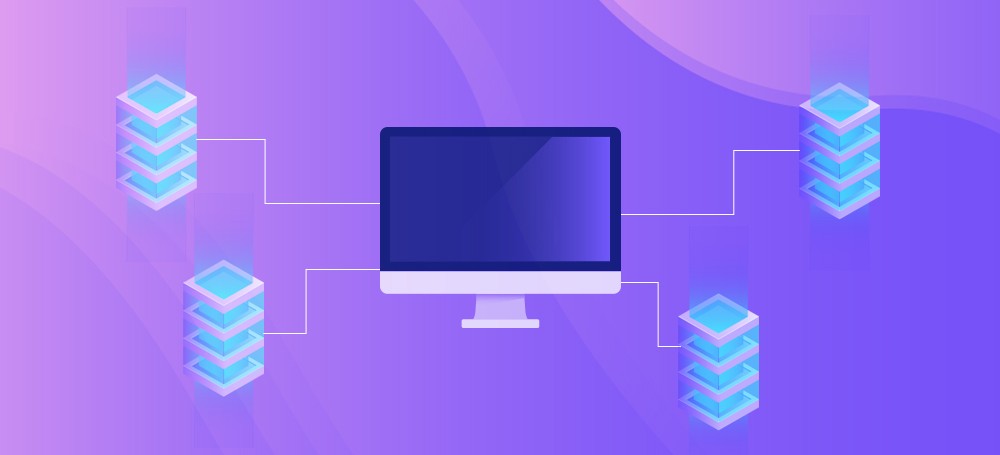Blockchain, cryptocurrency, and microservices architecture are the road to the future of the financial sector.
To keep up with the competitive market curve, cryptocurrency exchanges have taken a progressive technological shift from the conventional monolithic architecture to the more secure and robust microservices architecture.

Image Source: Google
Monolithic architecture has traditionally been popular because of how easily it could be developed and deployed. The system typically used API, Matcher, and Sync interfaces for building crypto trading platforms. API systems managed the individual API requests, application requests, and web traffic, while Matcher catered to buy and sell orders, and Sync took care of bank and blockchain integration.
The biggest loophole of monolithic architecture however was that it called for fresh deployment every time there was an update, making it extremely difficult to modify, too expensive, and time-consuming. Rising crypto exchange transactions escalated the demand for high-performing systems which could deftly handle the pressure of crypto exchanges. And so, the sheer size and scalability of crypto trading platforms instigated the shift to microservices architecture.
What is Microservices Architecture?
To truly understand the benefits of microservices architecture in the crypto trade, it’s important to first understand what it is. Microservices architecture is a software development technique through which applications are broken down as a collection of autonomous services. Microservices-based applications usually distribute work across multiple groups so that each of them can work independently without imposing a workload on others. With the help of microservices, crypto exchanges can add new payment applications or extra features keeping other services intact.
Microservices Architecture – Competent Features
Through its distinctive features, microservices architecture specifically addresses problems inherent to monolithic designs. Notably, microservices architecture has become a recent favorite among fintech companies for re-architecting existing crypto exchange applications, as well as for creating new ones. Microservices architecture is now widely preferred over monolith for its primary elements such as:
- Straightforward Codes – The biggest constraint of monolithic platforms that microservices architecture does away with is the basic design element. Unlike the monolith, the latter involves smaller code that can be re-implemented faster by crypto exchange development teams.
- API Accuracy – Microservice architecture ensures each element of the application can reliably send and receive data, as well as check that the APIs operate accurately.
- Traffic Management – Through this feature, management systems autoscale processes by tracking service loads and adding or deleting service instances.
- Data Offloading – Microservices ensure that user-specific data can be migrated into shared storage that is freely accessible, so a system crash doesn’t hamper user interaction.
- Monitoring – Microservices bring down application complexities by performing definite tasks like monitoring data centrally, and display information reflecting the quick changes in microservice applications.
What Are The Benefits of Microservices Architecture in Crypto Trading
What do the essential elements of microservices architecture mean for crypto trading platforms?
- Better Productivity – As microservices architecture segments larger applications into smaller groups, each team does not require the others’ inputs to continue working, leading to better productivity. Also, testing for errors becomes convenient and easy to follow.
- Quicker Delivery – Via microservices architecture, every micro service can operate independently according to its own needs, which is of particular relevance for the self-supporting cryptocurrency exchange software. Microservices architecture for crypto trading platforms makes code application easier – you no longer have to wait for the entire application, which is the case with monolith. Crypto exchange scripts can instantly be deployed through microservices.
- Privacy – Microservices architecture can isolate errors, which is a much more profitable mechanism given that cryptocurrency exchanges aren’t required to shut down their development process to fix errors. It shoots the product uptime and makes it easier to pinpoint issues.
- Flexibility – Crypto exchange developers have the liberty of using the technology and language of their choice in any section of the application.
- Scalability – The independent nature of microservices architecture ramps up a crypto application’s scalability. Programmers work in isolation without affecting each others’ schedules.
- Security – With teams focusing on small, well-defined functions, microservices architecture creates high-performing nodes, strengthening the security of crypto platforms. And in case of a security breach, the entire system is not unsettled.
Challenges of Implementing Microservices
Despite its usefulness, microservices architecture does have certain drawbacks. Overall complexity, lack of unified governance, data consistency, and expertise are all factors to contend with before crypto trading platforms think of implementing the architecture. Systems can become difficult to maintain, and project-wide standards might be needed to avoid technology anarchy. Crypto trading platform designs should ideally account for backward as well as forward compatibility.
The Road Ahead
Crypto platform developers are engaging with microservices architecture to build cryptocurrency exchange software. FinTech companies can utilize its merits to their benefit to generate light-weighted crypto trading applications for hassle-free maintenance and debugging. Moreover, microservices are set to go a long way in adapting to market changes and the changing curve of the financial ecosystem.


